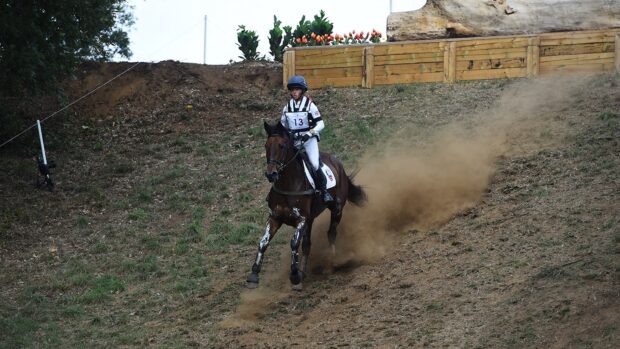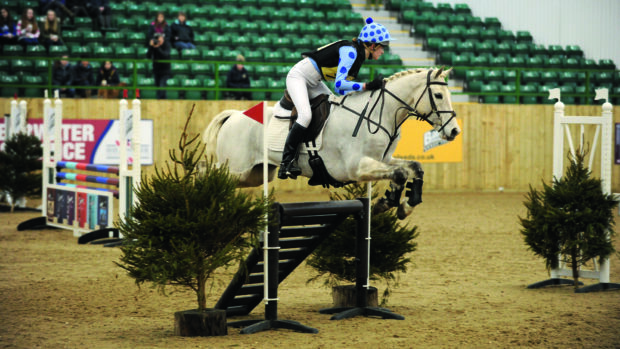New Zealand event rider Jesse Campbell moved to the UK in 2009 to train with Mark Todd. At 21, he became the youngest UK-based rider to be selected for the New Zealand eventing squad. Jesse runs his own yard in Marlborough and has competed on Nations Cup and in the Event Rider Masters series.
Training the stars
I was at Kelsall Hill with an experienced horse of mine, Amsterdam II (pictured at a different event), and he had a look at the decent drop they had on the intermediate track, which was purely through lack of recent exposure to this type of fence. I took him home and we spent some time practising drop fences and he’s been fine ever since.
In recent years there haven’t been as many drop fences appearing on courses but, when they do, they can take a horse by surprise. For this reason, it is vital to keep practising drop obstacles between events, even when you are progressing through the levels.
Successfully encouraging your horse to be confident with drop fences is down to preparation. When introducing him to one for the first time, find an inviting, low step and practise it to build up his confidence and gain his trust.
Tackling the issue
1. Start by approaching at a walk on a long rein. Your horse should be straight and in front of your leg. He should stay relaxed and in a rhythm. Once this is established you can progress to larger steps, and approach in faster gaits.
2. Allow your horse to use his neck by slipping your reins so you don’t catch him in the mouth. This will give him the freedom to use himself. If this is something you’re not used to, practise letting the reins run through your fingers and collecting them back up.
3. As you progress to riding drops at canter, make sure your horse is listening, but still in front of your leg. You need to allow him time to take in the drop fence, and going too fast can hinder this. Establishing a strong, rhythmical canter is key.
4. A good rider position will instil confidence in your horse to come off the drop and encourage him to tackle this type of obstacle again. Remember to sit up, keep your shoulders back and your lower leg secure. Always keep your eyes up and don’t look down. This is also vital when you have another fence to jump after the drop — your eyes need to be focused on this. While jumping down, keep your hands wide and soft as this will help you to get the contact back more quickly.
Continued below…

#SundaySchool: the showjumping ‘gym’ with Holly Smith
The international showjumper talks us through this multi-fence workout which she uses with both her younger and more experienced horses

#SundaySchool: Ben Way on improving a horse’s focus and rideability

Subscribe to Horse & Hound magazine today – and enjoy unlimited website access all year round
Consider this…
- Avoid letting your horse launch himself off the top of a drop through lack of confidence, as this can give him a fright and make jumping a related element much harder
- If you ever have an issue with a drop, always go back to walking down an easy drop fence on a long rein. By re-establishing the basics, you can rebuild your horse’s confidence
- Always get your horse’s back and tack checked to rule out a physical issue that may be causing issues with jumping off banks
For all the latest equestrian news and reports, don’t miss Horse & Hound magazine, out every Thursday




